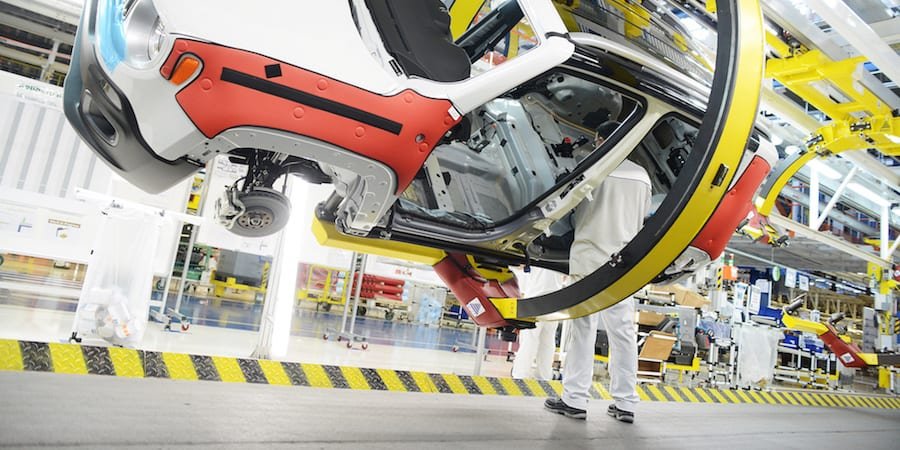As the global demand for vehicles continues to rise, the environmental impact of automotive manufacturing has become a significant concern. Chrysler, a prominent player in the automotive industry, has faced scrutiny over the years for its manufacturing processes. In this blog post, we’ll examine the environmental impact of Chrysler’s production methods, the challenges involved, and the steps the company is taking to minimize its ecological footprint.
1. Carbon Emissions from Manufacturing
Environmental Concern:
One of the most significant environmental challenges in automotive manufacturing is the emission of greenhouse gases (GHGs). Chrysler’s manufacturing plants, like those of other automakers, contribute to carbon emissions through energy consumption, particularly from the use of fossil fuels.
Impact:
- High levels of CO2 emissions contribute to global warming and climate change.
- The energy-intensive processes involved in producing vehicles add to the overall carbon footprint of each car manufactured.

Chrysler’s Response:
- Energy Efficiency Programs: Chrysler has implemented energy efficiency initiatives in its plants, including the use of renewable energy sources and the optimization of energy consumption in production lines.
- Carbon Offsetting: The company has also invested in carbon offsetting projects to mitigate the environmental impact of its manufacturing processes.
2. Water Usage and Pollution
Environmental Concern:
Automotive manufacturing requires significant water usage for cooling, cleaning, and various production processes. Improper management of water resources can lead to pollution and the depletion of local water supplies.
Impact:
- Water pollution from industrial discharge can harm local ecosystems and communities.
- Excessive water usage can strain local water resources, especially in areas already facing water scarcity.
Chrysler’s Response:
- Water Recycling: Chrysler has introduced water recycling programs in its plants to reduce overall water consumption and minimize wastewater discharge.
- Wastewater Treatment: The company has invested in advanced wastewater treatment facilities to ensure that water released back into the environment meets regulatory standards.
3. Waste Generation and Management
Environmental Concern:
Manufacturing vehicles generates significant amounts of waste, including metal scraps, plastic, rubber, and hazardous materials. Improper disposal of these materials can lead to environmental contamination.
Impact:
- Landfill waste contributes to soil and water pollution.
- Hazardous waste can pose serious risks to human health and the environment if not properly managed.
Chrysler’s Response:
- Zero-Waste Initiatives: Chrysler has adopted zero-waste-to-landfill programs in several of its plants, focusing on recycling and reusing materials to minimize waste.
- Hazardous Waste Management: The company adheres to strict regulations for the safe disposal of hazardous materials and continuously explores ways to reduce the generation of such waste.
4. Raw Material Sourcing
Environmental Concern:
The extraction and processing of raw materials, such as metals, plastics, and rubber, are resource-intensive and have significant environmental impacts, including habitat destruction, pollution, and energy consumption.
Impact:
- The mining of raw materials can lead to deforestation, loss of biodiversity, and ecosystem disruption.
- Processing these materials contributes to pollution and carbon emissions.
Chrysler’s Response:
- Sustainable Sourcing: Chrysler is committed to sourcing raw materials from suppliers that adhere to environmental and ethical standards, reducing the overall impact of material extraction and processing.
- Material Innovation: The company is also exploring the use of alternative, more sustainable materials in its vehicle production, such as recycled plastics and eco-friendly composites.
5. End-of-Life Vehicle Management
Environmental Concern:
Once vehicles reach the end of their useful life, the disposal of automotive components poses environmental challenges. Improper disposal can result in pollution and the loss of valuable materials.
Impact:
- Landfilling of automotive parts contributes to waste and environmental contamination.
- Valuable materials such as metals and plastics are lost if not properly recycled.
Chrysler’s Response:
- Vehicle Recycling Programs: Chrysler supports vehicle recycling initiatives that aim to recover and reuse materials from end-of-life vehicles, reducing the need for new raw materials and minimizing waste.
- Design for Recycling: The company has incorporated design strategies that make it easier to disassemble and recycle vehicle components at the end of their life cycle.
Conclusion
While Chrysler’s manufacturing processes have undeniable environmental impacts, the company is making strides toward reducing its ecological footprint. Through initiatives focused on energy efficiency, water conservation, waste management, and sustainable sourcing, Chrysler is working to balance the demands of automotive production with the need for environmental responsibility. As consumers, staying informed about these efforts allows us to make more conscious choices and support companies committed to a sustainable future.

